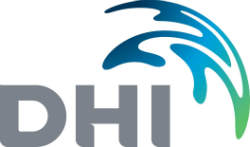DHI tested eight of the 15 ballast water management systems that received approval from the US Coast Guard.
DHI continuously improves procedures to deliver efficient testing made possible by an experienced international team and the flexible land-based test facility in Denmark.
DHI Ballast Water Centre provides an independent biological performance evaluation of ballast water management systems (BWMS) according to the requirements by the International Maritime Organization (IMO) and the United States Coast Guard.
Type approval of BWMS is granted by the IMO flag state or the US Coast Guard after the successful completion of biological efficacy tests conducted by DHI and other test facilities. The US Coast Guard regulation of ballast water discharged to US waters entered into force already in 2012, and BWMS manufacturers targeting globally operating vessels need to have their systems type approved by the US authorities.
Fifteen BWMS were type approved by the US Coast Guard by 25 January and applications representing more than ten BWMS are currently under review.
Eight of the BWMS that have a US Coast Guard type approval certificate passed the land-based test at DHI’s test facility in Denmark.
The manufacturers of these systems were Alfa Laval (Sweden), TeamTec OceanSaver (Norway), Sunrui (China), BIO-UV (France), Wärtsilä Water Systems Ltd (UK), Hyundai Heavy Industries Co (Republic of Korea), Headway Technology Co Ltd (China) and Panasia (Republic of Korea).
The purpose of the land-based test is to evaluate the biological efficacy of the BWMS under challenging conditions in a large-scale controlled experiment. The land-based test requires that the test facility staff are trained and capable of running the BWMS through the typical series of at least 15 test cycles.
The technical dialogue between the manufacturer and DHI prior to the planning of the test is the first important step in a successful biological performance evaluation.
“Our team includes people from countries in Asia and Europe. This gives us the benefits of different languages and cultural diversity that are valuable for the communication with our customers”, says Rémi Maguet, project manager at DHI.
DHI has agreements with three independent laboratories that are recognised by the US Coast Guard for the evaluation of BWMS type approval tests: DNV GL, Lloyd’s Register and Korean Register.
The collaboration with DNV GL and Lloyd’s Register has developed through many projects, while DHI has not yet conducted type approval testing together with Korean Register.
Several manufacturers from China, Japan and Korea, however, have been testing their BWMS at DHI’s test facility in Denmark, and it is the ambition of DHI to continue and expand the dialogue with manufacturers in Asia.
The experienced team and flexible work processes are the reasons for the efficient BWMS type approval testing at DHI. The land-based test facility usually accommodates five different BWMS, and an extra connection point for a sixth BWMS was established in 2018.
The extra connection point increases the flexibility of DHI’s test facility even further, as head of department Gitte I Petersen explains: “Many of our customers want to expand the testing programme to include an alternative filter or to verify the biological treatment efficacy, when the ballast water is discharged with the shortest possible holding time in the ballast water tanks. We have even better possibilities to meet the needs of the manufacturers, when we are able to connect six BWMS at the test facility.”
The commercial interest is that the treated ballast water complies with the regulations and preferably can be discharged directly after treatment by the BWMS. This means that the requirements to live organisms at discharge shall be fulfilled without the extra ‘help’ provided by the die-off during the storage in the ballast water tanks. The related BWMS type approval test concept is called ‘performance testing with reduced holding time’.
Before the initiation of the type approval test, the BWMS manufacturer describes the operational conditions that permit the BWMS to treat the ballast water in accordance with the regulation. This is referred to as the manufacturer’s performance claim, which shall be approved by the independent laboratory and implemented in the testing.
The manufacturers sometimes state performance claims suggesting that the BWMS can comply with the requirements with no holding time or any shorter holding time than the 24 hours prescribed in the ETV Protocol which is part of the US regulation.
The manufacturer and the independent laboratory may decide an operational holding time shorter than 24 hours, whereupon the treatment performance is verified at the land-based facility in tests with an appropriate short holding time. DHI is ready to provide the empirical evidence that may be required to support the performance claims by BWMS manufacturers.

